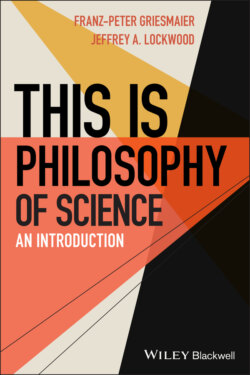Читать книгу This is Philosophy of Science - Franz-Peter Griesmaier - Страница 27
2.2.3 Observation, Naked and Enhanced
ОглавлениеAnother feature about observations is that when unaided, they can be both restricted in their scope and sometimes unreliable. Not only do we bring background knowledge to the categorization of our observations, but what we can observe in the first place is limited to and characterized by the way in which our brains process incoming information. First, there is a lot of information available in the world that our sensory apparatus cannot pick up directly. We can only see a small part of the electromagnetic spectrum – the wavelength of visible light stretches from about 390 to 700 nanometers. We obviously can’t see infrared (however, some snakes can), and we can’t see radiowaves or gamma rays. All of these waves can carry information. In order to tap into that information, we need special equipment, such as night vision goggles that allow us to “see” infrared, or radio receivers that allow us to hear the information superimposed onto the radiowaves.
Moreover, observing something with our unaided senses can sometimes lead to false, or inconsistent, beliefs. Consider trying to measure the temperature of an object with your hand. As it happens, you are coming home from a walk on a very cold afternoon. Somewhere along the way, you lost one of your gloves, so that only one of your hands was protected and is still nice and warm. The other hand has gotten quite cold. After you open the door, you are wondering whether the pot of soup you made earlier is still warm. You touch the pot with your cold hand and determine – observe – it to be still really hot. So you take off the glove from the other hand to pick up the pot and carry it to the table. Surprise! To the other hand, the temperature of the soup is barely above the temperature of the room. What’s happening is that the temperature information you receive from your two hands does not only depend on the temperature of the soup pot, but also on the temperature of your hands. That’s why you get inconsistent information. Hands, or thermoreceptors in the skin in general, are not designed to provide us with objective temperature readings; what they do is provide us with information about the temperature difference between environment and body.
In order to overcome these two shortcomings of unaided observations, we can – and do – avail ourselves of instruments that can both broaden the range of the information to which we have access and make the information less susceptible to distortions stemming from our sensory apparatus. Consider temperature again. We build thermometers that can measure the temperature of objects that would be far too hot or too cold to be touched by us without injury – molten iron, for example, or liquid nitrogen. In this way, we can get information we couldn’t receive through unaided observation. Second, thermometers, like all other measuring instruments, are calibrated. We use certain natural facts, such as the phase changes of water, to equip them with a scale that allows us to map numbers on the thermometer to temperatures in the objects measured. In the Celcius scale, the freezing point of water is set to 0, and its boiling point (at sea level) to 100 degrees. This has the effect that we measure the temperature of objects by comparing them to the temperature of water (at normal pressure), instead of simply determining the temperature difference between the measuring instrument and its environment, as we do when we ascertain temperature by means of our own body. Thus, we eliminate some of the subjective elements in our observations. But, as we will see shortly, a different sort of bias manifests itself in the use of measuring (and other scientific) instruments.
